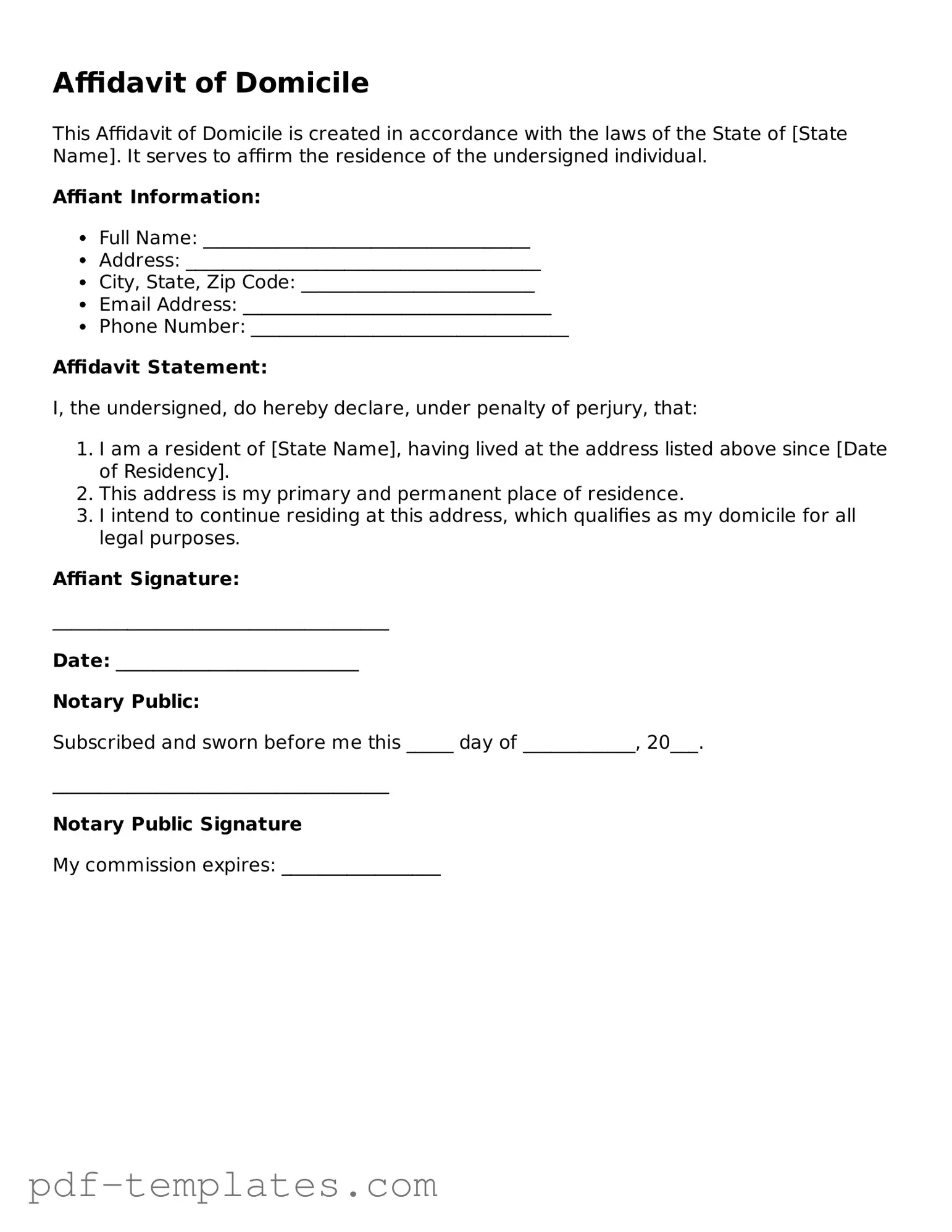The Affidavit of Domicile is a legal document that establishes an individual's permanent residence. It is often used in estate planning and can be compared to a Will. A Will outlines how a person's assets will be distributed after their death. Like the Affidavit, a Will must be executed with certain formalities, such as being signed and witnessed. Both documents serve to clarify an individual's intentions, though the Affidavit focuses on residency while the Will addresses asset distribution.
Another document similar to the Affidavit of Domicile is the Power of Attorney. This document grants someone the authority to act on behalf of another person in legal or financial matters. Both the Affidavit and Power of Attorney require a clear declaration of intent. They are both executed voluntarily and must be notarized to ensure authenticity. While the Affidavit confirms where someone resides, the Power of Attorney confirms who can make decisions for someone else.
The Affidavit of Domicile form is similar to a Last Will and Testament. Both documents serve to clarify the intentions of the individual in regard to their estate. A Last Will specifies how a person's assets are to be distributed after death, while an Affidavit of Domicile establishes the deceased's residence at the time of passing. This information is vital for determining which state's laws govern the distribution of the estate, especially in Texas, where you can find more details through this link: https://toptemplates.info/.
The Declaration of Trust is another document that shares similarities with the Affidavit of Domicile. A Declaration of Trust outlines the terms of a trust, including the assets held and the beneficiaries. Both documents require clear identification of parties involved and serve to protect the interests of individuals. The Affidavit affirms a person's residency, while the Declaration of Trust affirms the management and distribution of assets within a trust framework.
A Living Will also bears resemblance to the Affidavit of Domicile. A Living Will specifies a person's wishes regarding medical treatment in the event they cannot communicate those wishes themselves. Both documents articulate personal preferences and intentions. While the Affidavit establishes residency, the Living Will establishes healthcare directives, ensuring that an individual’s choices are respected even when they are unable to voice them.
The Certificate of Death is another document that can be compared to the Affidavit of Domicile. A Certificate of Death serves as official proof of an individual's passing and is often required for settling estates. Both documents are critical in the context of estate management. The Affidavit confirms residency for estate purposes, while the Certificate of Death confirms the conclusion of life, impacting how assets are handled thereafter.
Similarly, the Last Will and Testament is a foundational legal document that outlines an individual's wishes regarding asset distribution upon death. The Affidavit of Domicile can be used to support claims made in a Last Will, particularly regarding where the deceased lived. Both documents work together to provide clarity and intention regarding a person's affairs, ensuring that their wishes are honored after their passing.
Lastly, the Quitclaim Deed is akin to the Affidavit of Domicile in that it transfers ownership of property from one party to another. While the Affidavit establishes where someone lives, the Quitclaim Deed provides legal documentation of property ownership. Both documents require signatures and may need to be notarized. They serve distinct purposes but are both essential in establishing legal rights and intentions regarding property and residency.
